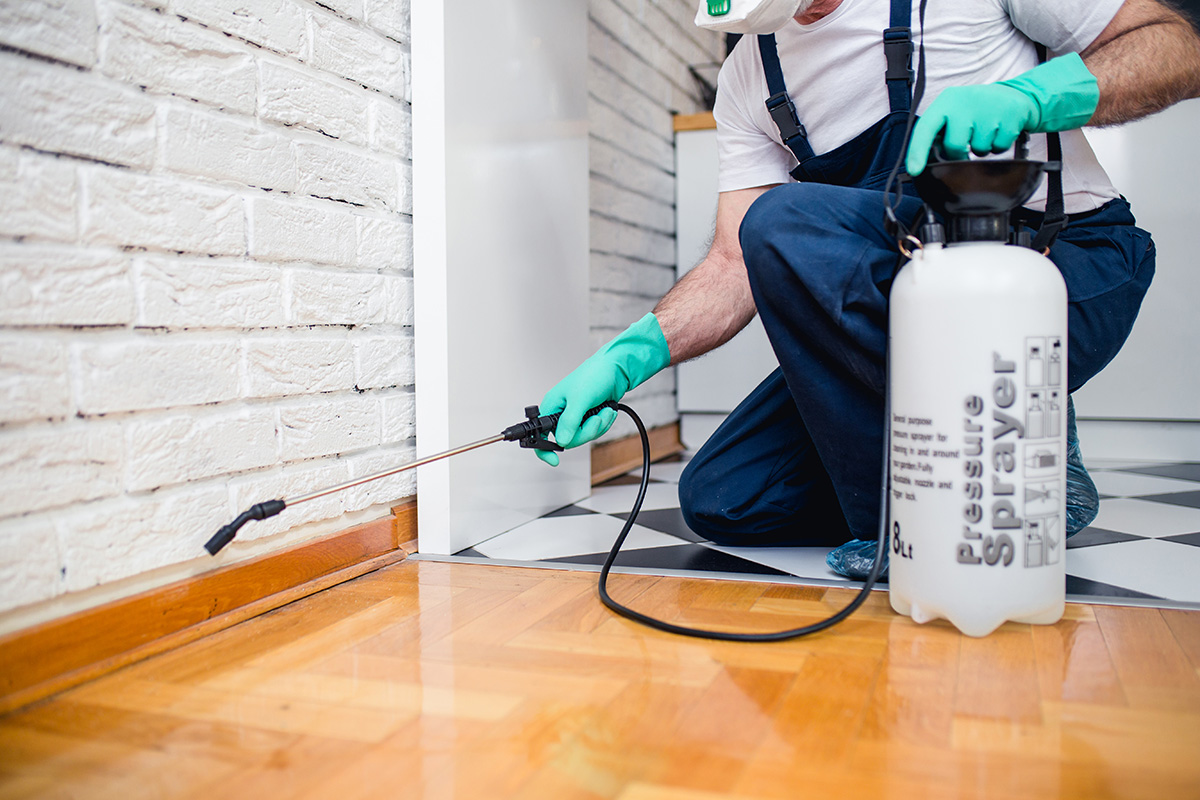Bed Insect Therapy Break Down: Contrasting Chemical Vs. Non-Chemical Solutions
In the world of pest control, especially when managing the relentless concern of bed insects, the option in between chemical and non-chemical therapy options can be a crucial one. Both methods supply unique advantages and downsides, affecting variables such as performance, safety factors to consider, and total cost. By taking a look at the nuanced information of each approach, a clearer understanding of which path to pursue in resolving a bed insect invasion can be obtained.
Efficiency of Chemical Treatments
Chemical treatments for bed bug invasions have actually been extensively acknowledged for their rapid and potent effectiveness in removing these insects. When thinking about the efficiency of chemical therapies, it is important to understand that they can offer a comprehensive and fast remedy to a bed insect problem. Specialist pest control experts commonly count on pesticides to target bed pests at different phases of their life cycle, consisting of grownups, eggs, and fairies. These chemicals typically function by disrupting the bed insects' nerves, bring about paralysis and ultimate death.
Furthermore, chemical treatments have the advantage of supplying residual effects, indicating that they can continue to remove bed pests also after the initial application. This recurring activity is particularly advantageous in combating any prospective re-infestations. Additionally, the fast activity of chemical therapies can bring alleviation to people dealing with serious bed pest problems, permitting them to reclaim control of their home swiftly.
Security Worry About Chemical Solutions
One important facet that requires mindful factor to consider when using chemical options for bed insect treatment is making sure the security of owners and the environment. Exposure to certain chemicals utilized in bed insect treatments can lead to respiratory concerns, skin inflammation, or various other adverse responses, especially in individuals with pre-existing problems or level of sensitivities.
In addition, the environmental effect of chemical options is one more significant factor to consider. Some chemicals made use of in bed insect therapies might be harmful to useful bugs, wildlife, and communities if they leach right into the dirt or water supply. It is necessary to make use of chemical treatments judiciously, following security standards, and taking into consideration much less toxic choices to minimize these dangers and ensure the secure and efficient monitoring of bed bug invasions.
Advantages of Non-Chemical Approaches
Taking into consideration the potential safety concerns and ecological influence connected with chemical services for bed bug therapy, discovering non-chemical strategies presents an encouraging alternative with numerous distinctive advantages. Non-chemical therapies are ecologically pleasant, as they do not contribute to air or water pollution, making them a sustainable option for bug control.
Additionally, non-chemical services can be effective in targeting bed insects, consisting of hard-to-reach areas where chemical treatments may not penetrate. Techniques such as warm treatment, vacuuming, vapor cleansing, and bed mattress coverings provide comprehensive elimination without the use of damaging chemicals. Additionally, non-chemical more info here strategies can be much less disruptive, requiring marginal preparation and enabling quicker reentry into treated locations. In general, choosing for non-chemical bed insect treatment approaches not just prioritizes security and environmental protection but likewise guarantees reliable and thorough bug control.
Limitations of Non-Chemical Treatments

In addition, non-chemical treatments typically call for numerous applications to achieve successful removal. This can be taxing and might not always assure full elimination of all bed pests and their eggs, especially in hard-to-reach or surprise areas.
Furthermore, the success of non-chemical treatments greatly relies upon proper application and thoroughness, which can be testing for individuals without specialist know-how. Inadequate application of non-chemical techniques may lead to insufficient obliteration, bring about consistent problems and the requirement for additional treatments.
Consequently, while non-chemical treatments have their advantages, it is crucial to acknowledge these constraints and consider them when identifying the most effective strategy for managing bed insect infestations.
Expense Comparison: Chemical Vs. Non-Chemical Options
Provided the limitations related to non-chemical treatments, a crucial aspect to evaluate in the context of bed insect management is the price comparison between chemical and non-chemical options. Chemical treatments commonly entail the application of insecticides by specialists, which can vary from $250 to $900 per room, depending upon the intensity of the problem and the size of the location to be dealt with. In contrast, non-chemical therapies like warmth therapy or heavy steam can be more costly, with costs varying from $1,000 to $6,000 for a whole home. While indoor termite control the first price of chemical treatments may seem lower, numerous treatments may be needed to fully remove the infestation, possibly increasing the general cost. On the various other hand, non-chemical options might provide a more environment-friendly and lasting solution, although they can be cost-prohibitive for some individuals. Eventually, when taking into consideration the expense of bed insect treatment options, it is vital to weigh the in advance expenses against the effectiveness and long-term sustainability of the chosen technique.
Final Thought

Taking into consideration the potential safety problems and environmental effect connected you can find out more with chemical services for bed bug treatment, checking out non-chemical strategies provides a promising alternative with numerous unique advantages.Given the limitations connected with non-chemical treatments, a crucial facet to evaluate in the context of bed insect monitoring is the cost contrast in between chemical and non-chemical alternatives. In contrast, non-chemical treatments like warm treatment or heavy steam can be much more expensive, with expenses varying from $1,000 to $6,000 for a whole home. While the first price of chemical therapies may appear reduced, multiple therapies may be required to fully eradicate the invasion, potentially boosting the overall price.In verdict, when comparing chemical and non-chemical bed bug treatment options, it is vital to take into consideration efficiency, safety, advantages, limitations, and cost.
Comments on “A1 Bed Bug Exterminator Charlotte - Efficient and Budget Friendly Services”